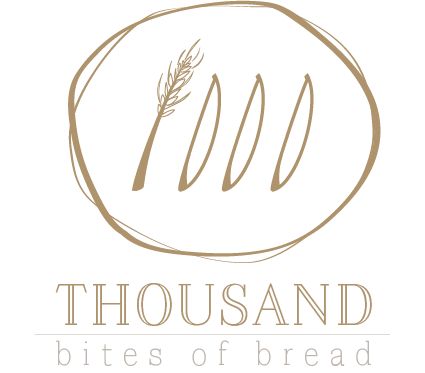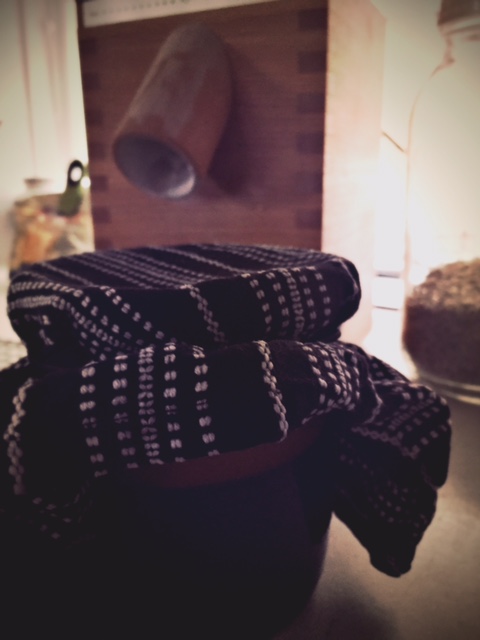I’ve been trying to decide where to start. What part of my bread story do I want to tell right from the get go? I could start in 1920’s Krakow, Poland with my grandmother. A lot of stories start with grandmothers. I’ve always been enchanted when my Grandma Doda talks about bread. Back in the 20’s, she and her twin brother trampled home from long days at school to a determined maid who fed them nubs of bread floating in broth. Later each day, their mother would come in and sit with them for a bedtime snack before heading out to evening social events. Her mother always gave them bread and chocolate, the same snack my dad gave to me and my sister. Grandma Doda’s bread story took a lot of sordid and painfully hungry turns, and we’ll get to that. For now, let’s acknowledge that these moments of sharing bread with her mother were some of her last memories before being hauled off to concentration camp.
That’s a long story and I’d like to break pieces off in smaller bites and share it slowly if you don’t mind. It’s not a place to start, but a conversation to continue.
To begin, let’s start with starter.
What is starter? Quite simply, it’s a piece of yesterday’s dough kept to use as yeast for today’s bread. But oh lordy! It’s so much more than that. If you know what’s really going on in there, it’s a small universe unto itself. That said, nobody I’ve talked to—cereal scientists and microbiologists included—really knows the full extent of what’s going on in there. A starter, or what some call “sourdough” or “culture” or, like me, “levain”, is a complex balance of micro-organisms—bacteria and yeasts and such—that work in harmony with each other to create the matrix of rising power that we so adore in our leavened bread. Unlike commercial yeast, which is comprised of a single micro-organism called Saccharomyces cerevisiae, natural levain is a whole ecosystem. Commercial yeast is great and all, but levain…Oh levain…it has the power of a gorgeous, mysterious love that overtakes you by force. It’s at once nourishing and satisfying, but also funky and unpredictable. It can be needy, but it’s also independent and self-sustainable. It has roots to our earliest agricultural communities, but thrives on the here and now and all that surrounds us, even the parts we cannot see.
Do you keep a starter? If not, I’ll share some of mine (just ask nicely). Or you could start your own; it’s pretty easy. Don’t let anyone bully you into thinking that you need magical ability to get a levain going. All you really need is flour and water, plus time and just enough attention to get to know your little yeasty beasties.
So…
Take a measure of flour and an equal measure of water and stir them together. Leave this covered with a towel on your countertop overnight. In the morning, it still won’t look like much, but don’t worry. Just laugh it off and discard all but a tablespoon of your young mixture, then add more flour and water in equal measure. Not too much because you’re just going to continue feeding and discarding this way until you start to see bubbles. At that point, I suggest going ahead and making bread (I’ll show you how). Yes, your levain is still in its early stages and you’re still getting to know each other, but no need to wait until everything feels perfect because here’s the really important thing: Levain is not a mere thing that you have, but rather, a relationship you nurture. And relationships, in my experience, are better served by diving right into their mysterious pull, getting all gorgeously messy and maybe making a few mistakes in the process, but having fun and learning about yourself and nourishing the deepest parts of you. I’m getting all carried away, but that’s levain.
You don’t have to totally understand it and you don’t have to control every part of it. You just have to show up every now and then and pay attention and feed it and know that it has the potential to be one of the most seductive and sustaining and tasty relationships you’ll ever know.
So, that’s it, but the story goes on… and on and on and on. My first starter was given to me by one of my early mentors, an herbalist who’s been homesteading since the early 60’s. I don’t know where she got it, but I was enchanted right off the bat. That said, I lost it somewhere along the way. I let it falter in the back of a fridge while I traveled the globe. A few years later, Gregg’s mom gave me a bit of starter that she uses to make sweet rolls that taste amazing from her hands, but never quite tasted right from mine. She feeds her starter flour, sugar, and water, and my relationship with that starter was forced and cloying and we eventually had to break up. I still indulge in the rolls at Christmas, but I’ve never been moved to spend every day with it.
The starter that captured my heart was gleaned from a friend who had recently read Tartine Bread. I was visiting with a close pal one afternoon when she pulled a little jar from a shelf in her warm kitchen. The smell hit me immediately, and my heart started to pound. I simply had to get to know that thing. Did I beg her for some? I don’t remember, but she did send me home with a tablespoon or two after dipping out handfuls of flour and stirring it into the starter with some water. That was five years ago, and before long, I was spending a few minutes every morning with my starter before the day got going. I stared in wonder at the changes it had made overnight, pushed my nose close and always felt amazed by the alluring smell and the life it gave off. I’d often dip my finger in and evaluate what it’s telling me. Get it? I was starting my relationship like you’d start any relationship. Spending time and energy getting to know one another.
That’s the lovely little thing I still feed today. In the early days, I kept it in the fridge and fed it once a week. At some point, I realized I was baking so much I might as well leave it out on the counter and feed it once a day. Now I feed it twice a day. But there you go. It did just fine in the fridge being fed once a week, but I decided I wanted to further this relationship and feed it more often. I wanted to spend more time with it.
I think I’m going to leave it there for now. If you have trouble starting your starter, let me know. If you want some of mine, reach out. We can also talk about making a schedule for feeding your levain that works for you. In the meantime, savor your every bite with delight and gratitude.
All my best,



Adrian-
When’s the best time to start a starter? The season has begun to turn here, in the beautiful medium between summer and fall, not quite cold enough to light a fire at night, but it’s time to pull out the sweaters and the warm socks. I’m daydreaming of warm bread in the mornings and I’m even willing to suffer the pissy attitude of my oven to achieve it. Dutch oven bread doesn’t have enough punch and allure for my taste, so can I start starter now or wait till next summer? Or should I plead, myself, for some of that good starter of yours?
Love,
George
Anytime! When you’re starting it especially, try to keep it in a warm part of your kitchen. Let me know if you have questions…
And of course, I’m happy to share my starter! Want me to send you some?